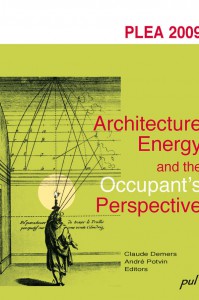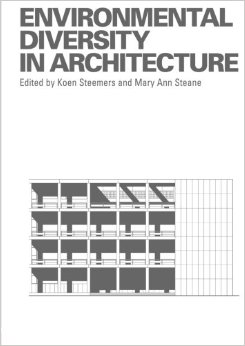Ouvrages / Books
Demers, C., Potvin, A. ed., 2009. Architecture, Energy and the Occupant’s Perspective. Proceedings of the 26th International Conference on Passive and Low Energy Architecture (PLEA). Quebec City: Les Presses de l’Université Laval (PUL). ISBN 978-2-7637-8939-2. ISBN 978-2-7637-8940-8 (CD)
“In the current context of major technological shifts in the fields of alternative materials and energy, the aim of the conference is to position the inhabitants as a key ‘active’ determinant of energy performance in ‘passive’ design through adaptive opportunities. Some 171 scientific papers selected by our Technical Committee amongst more than 500 extended abstract submissions present the most recent thoughts and researches within the rapidly evolving world of low energy architecture and occupants’ behavior. These proceedings are structured into three main chapters: Challenges: Occupants-Communities-Education; Strategies: Daylighting-PassiveHeating/Cooling-Post Occupancy Evaluation; and Integration: Integrated Design Process-Certification Tools-Innovative Materials and Systems. The 26th international conference on Passive and Low Energy Architecture (PLEA 2009) explores our quest for passive and low energy architecture through the occupants’ perspective at the urban and building scales.” A companion CD includes all oral and poster papers.
POTVIN, A. 2004. Chapitre 8 : “Intermediate Environments”. In: Environmental Diversity in Architecture. STEEMERS, K., STEANE, M.A. Eds. Routledge. London, UK. pp. 121-142.
“Transitional spaces favour environmental diversity and a progressive physiological adaptation to avoid discomfort generated by abrupt environmental transients. At the scale of the city, the public and semi-public realms are seen as generators of such diversity. The extent of the transformation of city centre and the underlying isotropisation is illustrated morphologically through the study of two cities. Practically, a survey method is introduced to measure the extent of environmental transients as experienced dynamically by a pedestrian when moving through the architecture of the city. Transitional spaces provide a moderate stimulation of the senses through a progressive physiological adaptation and therefore favour optimal receptivity of the moving being to its built and social environments.” A. Potvin.



